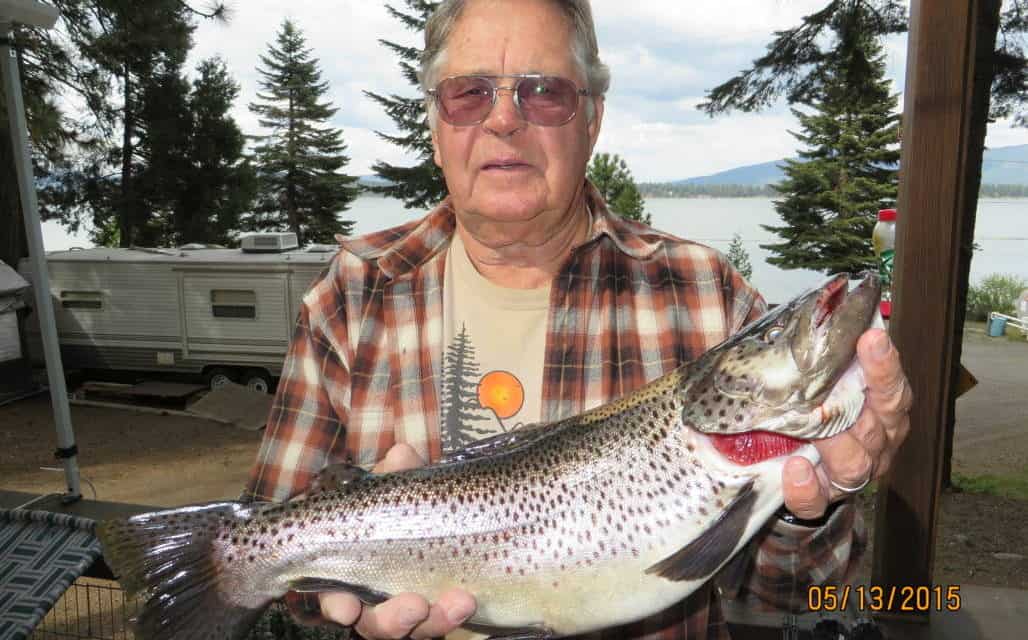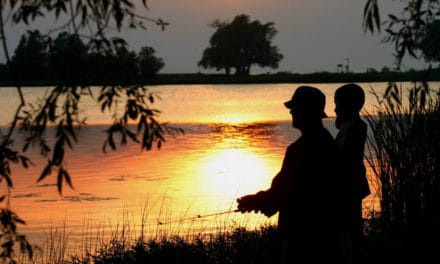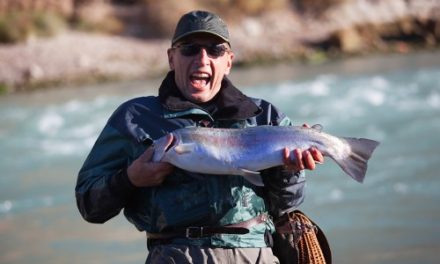By Bob Kopernik
When full, Lake Almanor offers about 44 square miles of surface area and 52 miles of shoreline. Located at 4500 feet in elevation the summer climate gives cool nights and warm days which is particularly inviting to outdoor activities. Because much of the water depth averages about 40 feet and the deepest river channel is just over 90 feet, the lake surface temperature warms up to a pleasant 72+ degrees for the two warmest months.
When the area surrounding the lake was developed a generous amount of shoreline and land was set aside never to be developed privately or commercially. This in addition to its semi-remote geographic location keeps overcrowding limited to the Fourth of July and Labor Day weekends. That’s the good news. The bad news is if you need lodging or campground accommodations during the peak summer months you must make reservations as early as possible. There are several large campgrounds that operate on a first come-first served basis but they do fill up during the peak season.
We spend the summer at Plumas Pines Resort on the west shore just north of the town of Prattville. This is a full service resort offering up-scale lake-side dining with full bar service. It also has a general store, cabins, RV spaces, riding stable and a complete marina selling live bait, tackle, ice, chips, candy beer, soda and boat fuel.
Watercraft rental is available on the south end of the property from Majors’ Outpost. Joe Majors has fishing boats, patio boats, ski and wakeboard boats and jet-skis that will satisfy your most demanding needs for water sport fun. All of his equipment is available for hourly, daily or weekly rental. He does take reservations. Always remember that this is a “Mountain Lake” and strong winds can sometimes come up quickly and make it dangerous for small boats and other watercraft.
If fishing is your interest, Lake Almanor has a reputation of providing some of the finest trout and salmon fishing in the western United States. More recently the bass fishermen have found that there is a robust population of small mouth bass ranging in size up to 5 pounds or more that are easily caught with a spinning reel. I think there must have been at least 10 bass tournaments held here last year.
Another noteworthy event that makes Lake Almanor unique is the Hex or Mayfly hatch which usually starts in late June. Many float tube fishermen anxiously look forward to this event and some are rewarded with very nice catches of both Brown and Rainbow trout. As the water surface temperature approaches 65 degrees the emergent larvae will begin their journey up the water column to the surface where (if they are lucky) they will spread their wings and fly off as adult Mayfly’s. Most of the best catches of fish will be taken somewhere near the bottom using wet flies or natural bait like meal worms and live crickets. Night crawlers will also work quite well. The hatch is sporadic and can last anywhere from two to eight weeks depending on Mother Nature.
Most of the fishermen concentrate on the west shore somewhere between Rocky Point Campground and the Diversion Channel near Hwy 89 and 36. There are a lot of launching and access points along this area and the muddy bottom is conducive to supporting a good hatch of insects. The flies may or may not hatch in the same location evening after evening. One trick that I have told people about is to watch where the seagulls are concentrated in the late afternoon.
If you have a boat or small skiff there are places off shore all over the lake where the hatch occurs.
Our most recent climate change has affected the trout and salmon fishing in that the water column temperature has warmed up earlier in the year giving rise to the amount of natural food in the form of insects and pond smelt for the fish to feed on. I believe that with all the natural food available, the fish are not as inclined to chase after or feed on the baits we fishermen offer them. Again, the bad news is I seem to be catching fewer fish per hour spent fishing when compared to a “normal” snow fall year. The good news is with all the available food the fish are just getting bigger. Another strange thing that happened last year was that very few salmon were caught. This year there has been more snow fall in the nearby mountains which make up the lake’s water shed. I hope we get a cold spring so that the snow pack lasts well into late May or early June.
If you are a first time fishermen to the lake, do a little homework by getting a good lake map or better yet get a GPS/sonar unit with a lake map and study the lake bottom features. I like to fish where there is a sloping bottom where the water is 20 to 40 feet deep. I catch most of my fish trolling half a night crawler behind some trolling blades about 1.7 MPH. Dodgers trolled a little slower will also produce fish. Some fishermen I know troll short rubber worms, meal worms, crickets and Gulp Smelt in the 2.5 to 3 inch size. Speedy Shiners with red/gold or silver with the red lightning bolt design and Needle Fish in Brown Trout color pattern are good lures for trolling. Most people troll them at 2.3 MPH but others have had reasonable success trolling them at speeds greater than 4.5 MPH. Another good tip is talk with some “successful” fishermen and see what is working for them.
There are several areas on the lake that still fishermen seem to prefer. If you see 4 or 5 boats fishing in a particular area, feel free to join them as long as you stay 50 or 60 feet away they will almost always share information about what is producing fish for them. A good bait for Salmon is to filet an anchovy and use about 2.5 inches of the tail smeared with an attractant like Trophy Trout. Both Brown and Rainbow trout will take night crawlers, meal worms, live crickets or a combination of the latter two fished 2 to 6 feet off the bottom.
One last suggestion that I present, if you are discouraged by not catching very many quality fish or just want to gain a wealth of knowledge about fishing this wonderful but sometimes frustrating body of water, consider hiring a fishing guide. The Almanor Fishing Association web site lists a number of them with a variety of options. Some have patio boats for large parties and are well suited for youngsters who do better still fishing. Others offer fly fishing or bass fishing and others, trips that include both still fishing and trolling. Note that I (normally) specialize only in trolling for trout and salmon.
I and at least one other guide, offer a “Learn the Lake” outing that actually takes you to and explains where, how and why to fish five or six different areas of the lake. On this trip, I spent significant time on how to use a sonar unit, rods, reels, basic knots for tying leaders, lures and how to rig baits. I’m surprised how often clients need help in how to effectively set the hook, play a big fish and coax it into the landing net. Be sure to clearly communicate with the guide that you choose what your needs, desires and expectations are, being aware that even the most experienced fishing guides can’t guarantee that you will catch fish. (That’s really why we call this sport “Fishing” instead of “Catching”.)
To see the guides listed go to.. http://www.almanorfishingassociation.com/lake_guides.html Good luck and “THINK BIG FISH”. Bob Kopernik Lucky Grady Fishing Guide Service LuckyGrady1@att.net +1.408.515.1503












